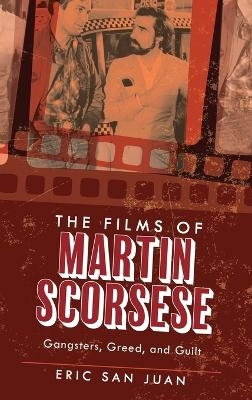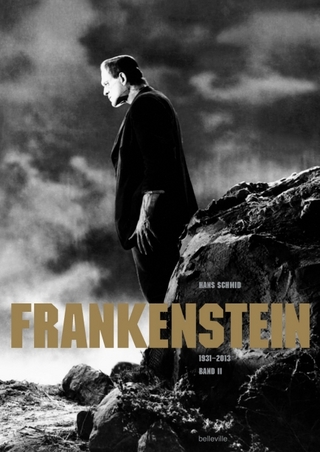
The Films of Martin Scorsese
Gangsters, Greed, and Guilt
Seiten
2020
Rowman & Littlefield (Verlag)
978-1-5381-2765-0 (ISBN)
Rowman & Littlefield (Verlag)
978-1-5381-2765-0 (ISBN)
This volume looks at the 24 features directed by Martin Scorsese in chronological order, providing an overview with some historical context, followed by a brief synopsis, and other details per film. Eric San Juan provides an accessible analysis diving deep into the themes, techniques, and innovations of each movie.
Few mainstream filmmakers have as pronounced a disregard for the supposed rules of filmmaking as Martin Scorsese. His inventiveness displays a reaction against the “right” way to make a movie, frequently eschewing traditional cinematic language in favor of something flashy, unexpected and contrary to the way “proper” films are done. Yet despite this, he’s become one of the most influential directors of the last fifty years, a critical darling (though rarely a box office titan), and a fan favorite.
On the surface, Scorsese’s work is defined by shocking violence and rampant profanity. These are often loud, brash films that appear to glorify the worst kinds of people. He makes heroes of mobsters, thugs, con men, and murderers. Yet dig deeper and you find the true beating heart of his oeuvre: guilt, collapse, self-destruction, spiritual turmoil, and the complicated hypocrisies of faith, among other themes that are a constant in his work.
In this book, San Juan guides readers through the crooks, the mobsters, the loners, the moguls, and the nobodies of Scorsese's 26-movie filmography. The Films of Martin Scorsese examines the techniques that have made him one of the most innovative directors in history: needle-drop soundtracks, outbursts of violence, daring camera work, and more. The book further looks at the themes that are the engine driving all of this, including themes of self-sabotage, alienation, faith, and guilt.
What is Martin Scorsese trying to tell us through his work? Can we learn something about the human conditions via works like Taxi Driver, Raging Bull, GoodFellas, and The Irishman?
With that goal in mind, between these covers you’ll find fodder for discussion, dissection, and debate, all of it driven by insightful-yet-approachable analysis of Martin Scorsese’s entire filmography, from 1967s Who’s That Knocking At My Door? to 2019’s The Irishman, as well as carefully chosen excerpts from five decades worth of Martin Scorsese interviews and rare behind-the-scenes photos.
Few mainstream filmmakers have as pronounced a disregard for the supposed rules of filmmaking as Martin Scorsese. His inventiveness displays a reaction against the “right” way to make a movie, frequently eschewing traditional cinematic language in favor of something flashy, unexpected and contrary to the way “proper” films are done. Yet despite this, he’s become one of the most influential directors of the last fifty years, a critical darling (though rarely a box office titan), and a fan favorite.
On the surface, Scorsese’s work is defined by shocking violence and rampant profanity. These are often loud, brash films that appear to glorify the worst kinds of people. He makes heroes of mobsters, thugs, con men, and murderers. Yet dig deeper and you find the true beating heart of his oeuvre: guilt, collapse, self-destruction, spiritual turmoil, and the complicated hypocrisies of faith, among other themes that are a constant in his work.
In this book, San Juan guides readers through the crooks, the mobsters, the loners, the moguls, and the nobodies of Scorsese's 26-movie filmography. The Films of Martin Scorsese examines the techniques that have made him one of the most innovative directors in history: needle-drop soundtracks, outbursts of violence, daring camera work, and more. The book further looks at the themes that are the engine driving all of this, including themes of self-sabotage, alienation, faith, and guilt.
What is Martin Scorsese trying to tell us through his work? Can we learn something about the human conditions via works like Taxi Driver, Raging Bull, GoodFellas, and The Irishman?
With that goal in mind, between these covers you’ll find fodder for discussion, dissection, and debate, all of it driven by insightful-yet-approachable analysis of Martin Scorsese’s entire filmography, from 1967s Who’s That Knocking At My Door? to 2019’s The Irishman, as well as carefully chosen excerpts from five decades worth of Martin Scorsese interviews and rare behind-the-scenes photos.
Eric San Juan is the author of several books including Lakehurst: Barrens, Blimps & Barons (2011), Stuff Every Husband Should Know (2011), and Akira Kurosawa: A Viewer’s Guide (Rowman & Littlefield, 2018) and the co-author of A Year of Hitchcock: 52 Weeks with the Master of Suspense (2009) and Hitchcock’s Villains: Murderers, Maniacs, and Mother Issues (2017), both published by Rowman & Littlefield.
| Erscheinungsdatum | 11.11.2020 |
|---|---|
| Verlagsort | Lanham, MD |
| Sprache | englisch |
| Maße | 160 x 240 mm |
| Gewicht | 549 g |
| Themenwelt | Kunst / Musik / Theater ► Film / TV |
| Kunst / Musik / Theater ► Theater / Ballett | |
| Schulbuch / Wörterbuch ► Lexikon / Chroniken | |
| ISBN-10 | 1-5381-2765-2 / 1538127652 |
| ISBN-13 | 978-1-5381-2765-0 / 9781538127650 |
| Zustand | Neuware |
| Haben Sie eine Frage zum Produkt? |
Mehr entdecken
aus dem Bereich
aus dem Bereich
Filmtechnik, Bildgestaltung und emotionale Wirkung
Buch | Hardcover (2024)
Carl Hanser (Verlag)
CHF 62,95


